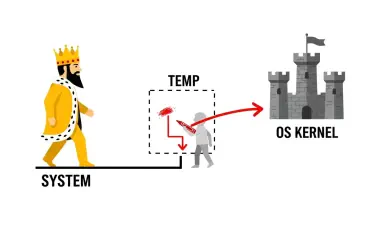The rapid advancements in agentic artificial intelligence (AI) are set to transform cybersecurity and business operations by 2025. This article delves into the insights from industry experts to explore how AI will redefine security roles, tools, and enterprise strategies, highlighting both the opportunities and challenges that lie ahead. The forthcoming shifts not only promise enhanced efficiency and autonomous functioning but also introduce a complex array of risks and considerations that organizations must address proactively.
Agentic AI and Cyber Defense
Autonomous Decision-Making in Cybersecurity
By 2025, agentic AI systems will be at the forefront of cyber defense, driving new AI-based solutions that enable autonomous decision-making and mitigation actions with minimal human intervention. These advanced systems will be capable of identifying and neutralizing threats in real time, significantly enhancing the speed and efficiency of cybersecurity measures, which traditionally have relied heavily on human oversight and rapid response teams. The autonomous nature of these systems promises to provide a more streamlined and efficient approach to managing the ever-increasing spectrum of cyber threats faced by modern enterprises.
With the capability to process vast amounts of data and recognize patterns faster than humanly possible, agentic AI can predict and preempt cyber-attacks before they materialize. This predictive power not only offers a significant leap in proactive threat management, but it also lessens the reactive burden typically placed on human operators. The real game-changer here is the ability of these systems to act autonomously, making instantaneous decisions that would otherwise require time-consuming analysis by human cybersecurity professionals. Consequently, businesses can expect a notable reduction in the time it takes to detect and respond to security incidents, leading to a stronger, more resilient cybersecurity posture.
Integration and Novel Risks
The integration of agentic AI into business operations will introduce novel risks, including data breaches, privacy concerns, and vulnerabilities specific to multi-agent systems. While the autonomous capabilities of these AI systems hold promise, they also come with significant risks that could potentially undermine the very security they are meant to enhance. For instance, the interconnectedness of multi-agent systems could create new attack vectors that cybercriminals might exploit, necessitating a new level of vigilance and strategic planning.
Organizations will need to develop robust strategies to manage these risks, ensuring that the benefits of AI are not overshadowed by potential security threats. This involves not only implementing stringent security policies but also investing in continuous training and awareness programs for employees. Furthermore, developing an understanding of the legal and ethical implications of using advanced AI systems will be crucial in navigating the complex landscape of AI-driven cybersecurity. Balancing the automation of threat detection and response with the need for data privacy and ethical considerations represents a significant challenge that organizations must address proactively if they are to harness the full potential of AI without falling prey to its inherent risks.
The Rise of Shadow AI
Unregulated AI Deployment
The increased deployment of generative AI tools by employees without proper governance, known as “shadow AI,” will pose significant data security risks for enterprises. This unregulated use of AI can lead to unauthorized access to sensitive information and potential data breaches, creating a fertile ground for cybercriminal activities. Employees, driven by the convenience and efficiency of generative AI tools, may unknowingly expose the organization to significant threats by bypassing established security protocols.
Shadow AI’s prevalence is particularly concerning due to its potential to undermine organizational cybersecurity from within. The lack of formal oversight and the integration of these tools into day-to-day operations can lead to serious security lapses. Sensitive corporate data, intellectual property, and customer information are at risk of being inadvertently exposed or maliciously exploited. Moreover, the unauthorized implementation of these tools can result in compliance violations, drawing regulatory scrutiny and potentially leading to severe financial penalties and reputational damage for the organization.
Governance and Training
Addressing the risks associated with shadow AI will require robust AI governance policies, comprehensive workforce training, and advanced automated detection measures. It is imperative for organizations to implement strict guidelines and educate employees on the safe and responsible use of AI tools to mitigate these risks effectively. Establishing a clear framework for the deployment and use of AI technologies within the enterprise can help ensure that all AI applications adhere to the organization’s security standards and compliance requirements.
Another critical component is the development and implementation of advanced automated detection measures that can identify the unauthorized use of AI tools. These systems should be designed to flag and monitor deviations from established protocols, providing real-time alerts to cybersecurity teams. Additionally, fostering a culture of security awareness within the organization is essential. Regular training sessions, updates on emerging threats, and clear communication of the potential consequences of shadow AI will empower employees to make informed decisions and align their actions with the organization’s security objectives. By creating a well-rounded approach that includes governance, training, and technology, businesses can effectively manage the challenges posed by shadow AI while leveraging its potential benefits.
AI in Software Development
AI in software development is revolutionizing the industry by automating routine tasks, enhancing productivity, and enabling developers to focus on more complex and creative aspects of their work. Advanced machine learning algorithms can generate code, identify and fix bugs, and even predict project timelines, drastically improving efficiency. Meanwhile, natural language processing (NLP) tools are helping bridge communication gaps between developers and non-technical stakeholders, ensuring that software meets user needs more precisely. This transformative integration of AI technologies is not only expediting development processes but also fostering innovation and elevating the overall quality of software products.
Streamlining Development Processes
Generative AI will revolutionize software development processes by automating routine tasks and accelerating the creation of complex code. This technological leap will enable software developers to shift their focus from repetitive coding tasks to more strategic and innovative aspects of software design. The automation of tedious processes will not only save time but also reduce the risk of human error, thereby enhancing overall productivity and the quality of the final software product.
AI-driven automation tools can quickly generate code snippets, perform exhaustive testing, and identify bugs, all of which contribute to a more efficient development cycle. With AI handling the bulk of the groundwork, developers can concentrate on crafting cutting-edge features and functionalities that align with user needs and business goals. Moreover, generative AI can assist in managing code complexity, ensuring compatibility across different platforms and improving code maintainability. By leveraging AI, software development teams can achieve higher efficiency, faster release cycles, and improved innovation, positioning their organizations at the forefront of technological advancement.
Ensuring Code Security
Despite the efficiency gains, ensuring the security of AI-generated code remains a critical concern. As these tools become integral to software development, organizations must prioritize rigorous code reviews and implement advanced security measures to identify and rectify vulnerabilities early in the development lifecycle. Ensuring that AI-generated code adheres to security best practices is paramount to maintaining the integrity and resilience of the software.
Incorporating automated security testing and validation processes can help identify potential vulnerabilities at various stages of development. These tools can perform static and dynamic code analysis, vulnerability scanning, and penetration testing, providing a comprehensive security assessment. However, human oversight remains essential to thoroughly review the AI-generated code, ensuring it meets the necessary security standards. Implementing a robust security framework that combines AI-driven automation with human expertise will enable organizations to mitigate risks and build secure, reliable software. By prioritizing security throughout the development lifecycle, businesses can harness the benefits of generative AI without compromising the safety and integrity of their software solutions.
The Evolving Role of CISOs
In today’s rapidly changing digital landscape, the role of Chief Information Security Officers (CISOs) is continually evolving to address new and emerging threats. The increasing complexity of cybersecurity challenges requires CISOs to be more than just guardians of data. They must also be strategic leaders, ensuring their organizations are resilient and prepared for potential cyber incidents. The CISO’s responsibilities now encompass regulatory compliance, risk management, and collaborative efforts across departments to fortify an organization’s overall security posture.
Leadership in Business Resilience
Chief Information Security Officers (CISOs) will assume leadership roles as architects of business resilience, balancing innovation with risk management. In the evolving landscape where AI-driven systems are increasingly being integrated into operations, CISOs will be pivotal in steering organizations through the complex terrain of cybersecurity. Their role will extend beyond traditional security measures to include strategic decision-making and risk assessment concerning AI technologies.
CISOs will be responsible for developing and implementing strategies that leverage AI while safeguarding against potential threats. This involves not only embracing AI for enhanced security measures but also understanding the broader implications of AI on business operations. By fostering a proactive approach to risk management, CISOs will ensure that their organizations are well-prepared to handle unforeseen challenges and adapt to the rapidly changing technological environment. Their leadership will be crucial in instilling a culture of security awareness and resilience, making cybersecurity a foundational aspect of the organization’s overall strategy.
Addressing Shadow AI and Governance
CISOs will need to address challenges related to shadow AI, ensuring robust governance and secure AI implementations. This will involve creating comprehensive policies, conducting regular audits, and fostering a culture of security awareness within the organization. By implementing clear guidelines on the use of AI tools and technologies, CISOs can mitigate the risks associated with unauthorized AI deployments and ensure that all AI applications align with the organization’s security standards.
Regular audits and assessments will be instrumental in identifying potential vulnerabilities and areas of non-compliance. CISOs must also emphasize the importance of continuous education and training for employees, equipping them with the knowledge and skills to use AI responsibly and securely. Building a culture that prioritizes security and accountability at all levels of the organization will be key to navigating the challenges posed by shadow AI. By taking a holistic approach to AI governance, CISOs can create a secure environment that harnesses the benefits of AI while mitigating the associated risks.
AI’s Impact on Work and Productivity
Artificial Intelligence (AI) is significantly transforming the landscape of work and productivity. By automating routine tasks, AI allows employees to focus on more complex and creative aspects of their work. This shift can lead to increased efficiency and innovation within organizations. Additionally, AI-powered tools are enhancing decision-making processes by providing data-driven insights and predictive analytics. While AI brings numerous benefits, it also raises important considerations regarding the future of employment and the need for upskilling the workforce to adapt to new technological advancements.
Enhancing Efficiency
AI will become an essential part of business operations, driving efficiency and becoming a significant component of various job roles, including those in IT and cybersecurity. By automating routine tasks, AI will enable employees to focus on higher-value activities, boosting overall productivity and allowing for greater innovation and strategic thinking. As AI systems take on more repetitive and labor-intensive tasks, human resources can be allocated to more complex and creative endeavors.
In the realm of IT and cybersecurity, AI can handle tasks such as monitoring network traffic, analyzing security logs, and detecting anomalies, all of which are vital for maintaining a secure environment. The speed and accuracy of AI in processing large volumes of data provide significant advantages, allowing IT professionals to respond to threats more swiftly and effectively. Additionally, AI’s ability to learn and adapt over time means that it can continuously improve its performance, offering even greater support to human operators. By leveraging AI to manage routine functions, organizations can enhance their operational efficiency and better allocate their workforce to strategic initiatives that drive business growth.
Risk vs. Reward
By 2025, AI technologies, especially generative AI, will be scrutinized for their risk versus reward. Organizations will need to carefully evaluate the potential benefits of AI against the materiality of associated risks, ensuring that AI-driven innovations do not compromise security or operational integrity. The balance between leveraging AI for increased efficiency and safeguarding against potential threats will become a critical focal point for business leaders.
To achieve this balance, organizations will need to conduct thorough risk assessments and develop comprehensive risk management strategies. This involves understanding the specific vulnerabilities and threats posed by AI technologies and implementing measures to mitigate these risks. Transparent communication with stakeholders about the potential risks and benefits of AI is also essential for gaining buy-in and ensuring that all parties are aligned with the organization’s AI strategy. Ultimately, the goal is to harness the transformative power of AI in a way that maximizes reward while minimizing risk, creating a secure and efficient operational environment.
Cost Implications of AI
Reducing Development Costs
Reducing development costs is a critical focus for many organizations aiming to enhance efficiency and profitability. By implementing strategies such as utilizing open-source software, adopting agile methodologies, outsourcing non-core activities, and automating repetitive tasks, companies can significantly lower expenses while maintaining high-quality output.
AI will drive down the cost of software development, prompting Chief Information Officers (CIOs) to pivot from vendor-first approaches to developing bespoke solutions in-house. This shift will be fueled by the potential for creating value and enhancing productivity through AI-driven innovations. With AI automating many aspects of the development process, organizations can reduce their reliance on external vendors and invest in building customized solutions tailored to their specific needs and objectives.
The cost savings achieved through AI-driven development can be significant, allowing businesses to allocate resources more efficiently and invest in other strategic areas. By bringing development in-house, organizations can also exercise greater control over the quality and security of their software, ensuring that it aligns with their standards and requirements. Additionally, the ability to create bespoke solutions that address unique business challenges can provide a competitive advantage, enabling organizations to respond more effectively to market demands and customer needs.
In-House Development
The reduction in development costs will encourage businesses to invest in in-house AI capabilities, allowing for more tailored and efficient solutions. This approach will enable organizations to better align their technology strategies with their specific needs and objectives, fostering a culture of innovation and continuous improvement. In-house development teams can work closely with other departments to understand their requirements and develop solutions that address their unique challenges.
Building internal AI capabilities also provides opportunities for upskilling and professional development, empowering employees to leverage AI technologies to drive business success. By investing in AI training programs and fostering a culture of innovation, organizations can create a workforce that is well-equipped to harness the potential of AI. This, in turn, can lead to more agile and responsive business operations, enabling organizations to adapt quickly to changing market conditions and stay ahead of the competition. By focusing on in-house development, businesses can create a more dynamic and resilient operational environment, poised to take full advantage of the transformative power of AI.
Introduction of AI Agents
The advent of artificial intelligence has revolutionized various industries, enabling the creation of AI agents that perform tasks with incredible efficiency and accuracy. These AI agents can automate mundane tasks, provide deep data analysis, and even assist in decision-making processes, significantly enhancing productivity across different sectors. The integration of AI agents into our daily lives raises questions about the future of work, ethics, and the dynamics of human-machine collaboration.
Enhancing Cyber Resilience
In today’s digital age, the importance of robust cybersecurity measures cannot be overstated. With the increasing frequency and sophistication of cyber threats, organizations must adopt a proactive stance to protect their digital assets and ensure business continuity. Enhancing cyber resilience involves not only implementing advanced security technologies but also fostering a culture of awareness and preparedness among employees. By doing so, companies can better anticipate, withstand, and recover from cyber incidents, safeguarding their operations and maintaining trust with their stakeholders.
The emergence of agentic AI will enhance cyber resilience by automating threat detection and response. These AI agents will be capable of identifying and neutralizing threats in real time, significantly improving the speed and effectiveness of cybersecurity measures. The ability to act autonomously allows these AI agents to mitigate threats rapidly, even in the absence of human intervention, ensuring continuous protection against a wide array of cyber threats.
AI agents can monitor network activities round-the-clock, providing constant vigilance and immediate response to any detected anomalies. This continuous monitoring helps in the early detection of potential threats, reducing the window of opportunity for cybercriminals to exploit vulnerabilities. As AI agents evolve, their ability to learn from past incidents and adapt to new threat landscapes will further enhance their effectiveness. By integrating these advanced AI agents into their cybersecurity frameworks, businesses can achieve a higher level of protection and resilience, safeguarding their critical assets and information from evolving cyber threats.
Mitigating New Risks
While AI agents offer significant benefits, they also introduce new risks related to interconnected AI systems. The complexity of these systems can create unforeseen vulnerabilities that cybercriminals might exploit. Businesses will need stringent data access policies, clear communication practices, and robust security measures to mitigate these risks and ensure the safe deployment of AI agents. It is essential to establish a comprehensive security framework that encompasses all aspects of AI integration, from data protection to system interoperability.
Implementing stringent access controls and encryption methods can protect sensitive information and reduce the risk of unauthorized access. Regular security audits and assessments can help identify and address potential vulnerabilities in AI systems. Additionally, fostering clear communication practices within the organization ensures that all stakeholders are aware of AI-related risks and the measures in place to mitigate them. By adopting a proactive and comprehensive approach to AI security, businesses can harness the benefits of AI agents while minimizing the associated risks. This balanced approach will be crucial in ensuring the successful and secure integration of AI into business operations.
Implications for API Security
In its deliberate approach to addressing the complexities of cryptocurrencies, the SEC opted for another delay in its verdict on the spot Ethereum ETF. The extension grants the SEC an opportunity not only to conduct an in-depth examination of Ethereum’s suitability for ETF status but also to source public insight, which could heavily sway the conclusion. This speaks to the SEC’s attentiveness to the nuances of digital assets and their integration into regulatory frameworks, which it does not take lightly. The situation closely parallels the stalling faced by Grayscale, who is also waiting for the green light to transform its Ethereum Trust into a spot ETF, raising questions about the contrasting regulatory processes for Bitcoin and Ethereum.
API security has become a critical concern for developers and organizations as the number of APIs continues to grow rapidly. Ensuring the protection of sensitive data and maintaining the integrity of communications between systems are paramount. Security measures such as authentication, authorization, encryption, and regular auditing are essential to safeguard APIs from vulnerabilities and prevent unauthorized access. As cyber threats evolve, so too must the strategies and tools used to defend against them, emphasizing the importance of staying up-to-date with the latest security practices and technologies.
Evolving Detection Methods
The rise of agentic AI will render traditional methods of detecting malicious automated activity obsolete. As cybercriminals become more sophisticated in their tactics, organizations will need to adopt new approaches that focus on behavior and intent prediction to effectively identify and mitigate AI-driven threats. Traditional signature-based detection methods will no longer suffice in this evolving landscape, necessitating the development of more advanced and adaptive security solutions.
Predictive analytics and machine learning algorithms will play a critical role in this shift, enabling organizations to anticipate and counteract malicious activities before they can cause significant harm. By analyzing patterns of behavior and identifying deviations from the norm, these advanced techniques can detect potential threats more accurately and promptly. This proactive approach to threat detection will be essential in staying ahead of increasingly sophisticated cyber adversaries, ensuring that organizations can maintain a robust security posture in the face of evolving challenges.
Advanced Security Measures
To address the evolving threat landscape, businesses must implement advanced security measures that leverage AI’s capabilities. This will involve continuous monitoring, real-time threat analysis, and proactive defense strategies to stay ahead of potential attackers. Integrating AI-driven tools with existing security infrastructures can enhance their effectiveness, providing a comprehensive defense mechanism that can adapt to emerging threats.
Organizations must prioritize the development and deployment of security solutions that can learn and evolve over time. These adaptive systems should be capable of recognizing novel attack patterns and responding dynamically to mitigate risks. Additionally, fostering collaboration between human experts and AI systems can create a more resilient security framework. By combining the strengths of AI with human intuition and expertise, businesses can develop a multi-layered defense strategy that is both effective and adaptable. This integrated approach will be crucial in addressing the complexities of modern cybersecurity and ensuring the protection of critical assets and information.
Automation and Accountability in Code Development
Growing Role of AI in Coding
The rapid advancements in agentic artificial intelligence (AI) are set to transform cybersecurity and business operations by 2025. Leveraging insights from industry experts, this article examines how AI will redefine security roles, tools, and enterprise strategies, showcasing both opportunities and difficulties that lie ahead. As AI evolves, it promises to enhance efficiency and enable autonomous functions within organizations.
These advancements are anticipated to bring significant improvements in identifying security threats, streamlining operations, and making data-driven decisions. For instance, AI algorithms can quickly detect anomalies and potential breaches in a way that human analysts might miss, leading to faster, more effective responses. However, the integration of AI also introduces a new array of risks that cannot be overlooked. Organizations will need to address issues such as algorithmic bias, decision transparency, and the potential for AI-driven systems to be targeted by cyberattacks.
Organizations must prepare by investing in AI education and training, as employees will need to understand and work alongside these powerful new tools. Additionally, businesses will need to develop comprehensive strategies to manage and mitigate the risks associated with AI. This includes robust frameworks for ethical AI use, securing AI systems against attacks, and ensuring compliance with regulatory standards. As AI technology continues to evolve, proactive planning and strategic adaptation will be key to harnessing its full potential while managing the accompanying challenges.













